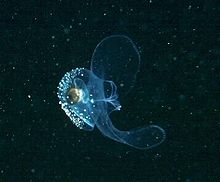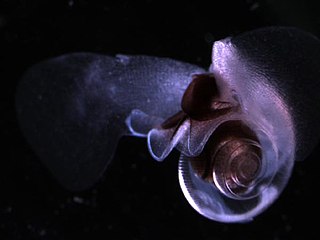
Sea butterflies, scientific name Thecosomata, are a taxonomic suborder of small pelagic swimming sea snails. They are holoplanktonic opisthobranch gastropod mollusks. Most Thecosomata have some form of calcified shell, although it is often very light and / or transparent.
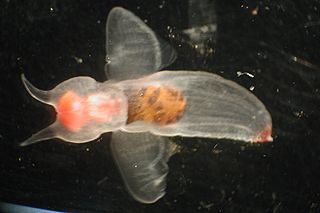
Sea angels are a large group of small free-swimming sea slugs, not to be confused with Cnidarians, classified into six different families. They are pelagic opisthobranchs in the clade Gymnosomata within the larger mollusc clade Heterobranchia. Sea angels were previously referred to as a type of pteropod.

The Limacinidae are a family of small sea snails, pteropods, pelagic marine gastropod mollusks in the clade Thecosomata.

Limacina is a genus of swimming predatory sea snails commonly known as sea butterflies in the family Limacinidae. This genus contains some of the world's most abundant gastropod species.
The Notobranchaeidae, or "naked sea butterflies", are a taxonomic family of floating sea slugs, specifically under the subclass Opistobranchia, also called "sea angels".

Pteropoda are specialized free-swimming pelagic sea snails and sea slugs, marine opisthobranch gastropods. Most live in the top 10 m of the ocean and are less than 1 cm long. The monophyly of Pteropoda is the subject of a lengthy debate; they have even been considered as paraphyletic with respect to cephalopods. Current consensus, guided by molecular studies, leans towards interpreting the group as monophyletic.

Littorinimorpha is a large order of snails, gastropods, consisting primarily of sea snails, but also including some freshwater snails and land snails.

Cypraeoidea, the cowries and cowry allies, is a superfamily of sea snails, marine gastropods included in the clade Littorinimorpha. This superfamily had been called Cypraeacea and was named by Rafinesque in 1815.
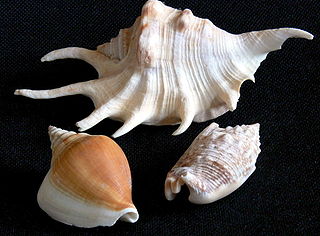
The Stromboidea, originally named the Strombacea by Rafinesque in 1815, is a superfamily of medium-sized to very large sea snails in the clade Littorinimorpha.
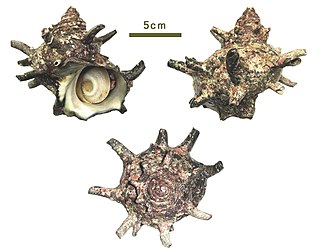
Turbinidae, the turban snails, are a family of small to large marine gastropod molluscs in the superfamily Trochoidea.

The Buccinidae are a very large and diverse taxonomic family of large sea snails, often known as whelks or true whelks.

Neritidae, common name the nerites, is a taxonomic family of small to medium-sized saltwater and freshwater snails which have a gill and a distinctive operculum.
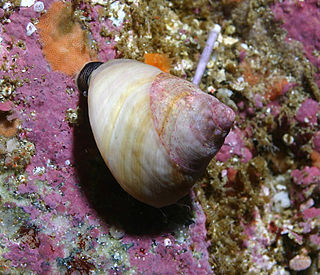
Trochoidea is a superfamily of small to very large vetigastropod sea snails with gills and an operculum. Species within this superfamily have nacre as the inner shell layer. The families within this superfamily include the Trochidae, the top snails. This superfamily is the largest vetigastropodan superfamily, containing more than 2,000 species.

Apogastropoda was previously used as a major taxonomic grouping of sea snails, marine gastropod molluscs. This infraclass mostly consisted of marine limpets and operculate snails. At least 20,000 species were considered to exist within the two clades that were included, Heterobranchia and Caenogastropoda.

The Pterotracheoidea is, according to the Taxonomy of the Gastropoda, a taxonomic superfamily of sea snails or sea slugs, marine gastropod molluscs in the clade Littorinimorpha. They are commonly called heteropods or sea elephants.

Modulidae, common name modulids, is a family of small sea snails, marine gastropod molluscs in the superfamily Cerithioidea.

The family Cavoliniidae is a taxonomic group of small floating sea snails, pelagic marine opisthobranch gastropod mollusks.
The Praecuvierinidae are a family of extinct, small, floating sea snails, pelagic marine opisthobranch gastropod mollusks in the superfamily Cavolinioidea.
The family Cliidae is a taxonomic group of small floating sea snails, pelagic marine opisthobranch gastropod mollusks.
Creseidae is a family of gastropods belonging to the order Pteropoda.
